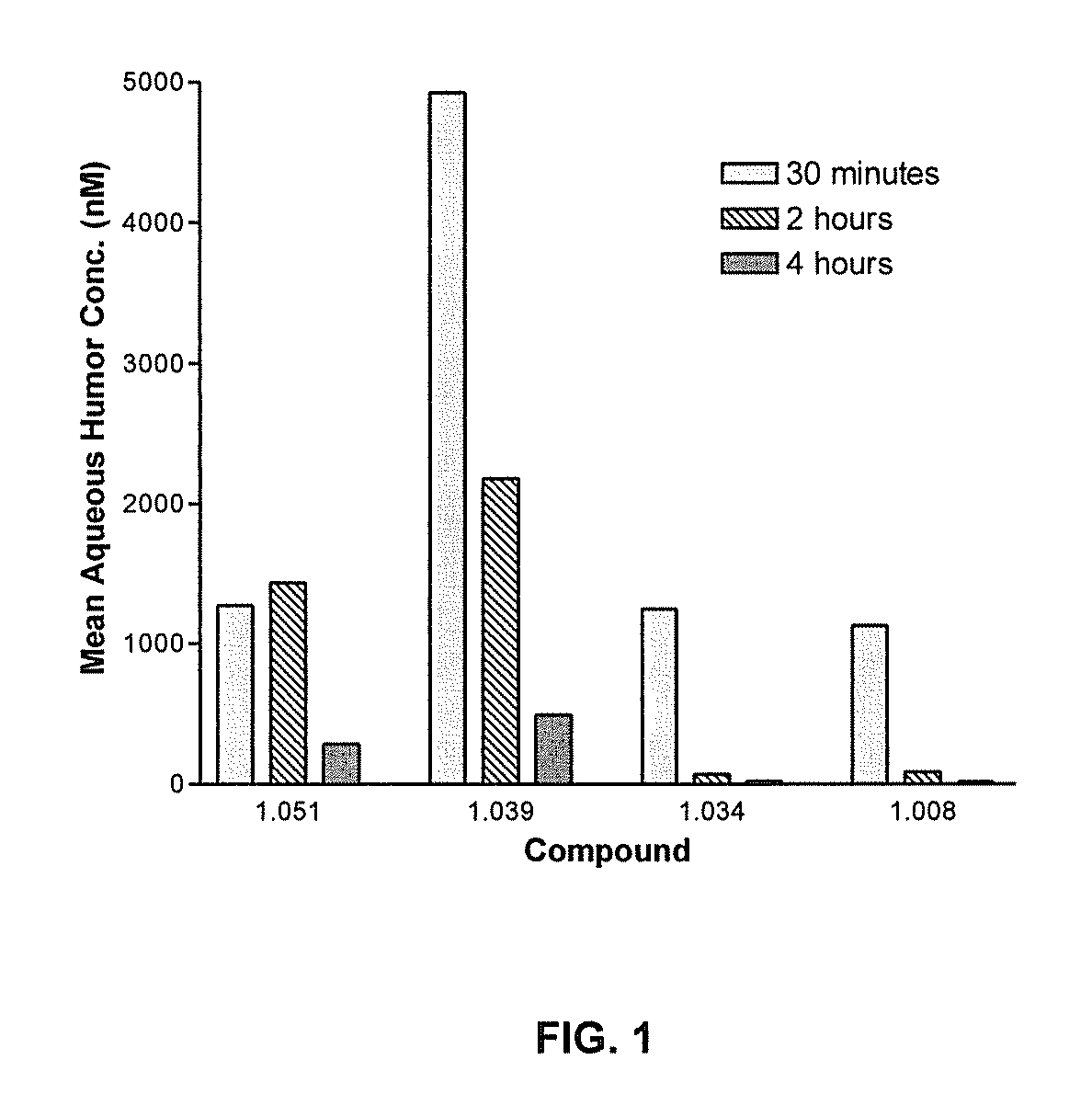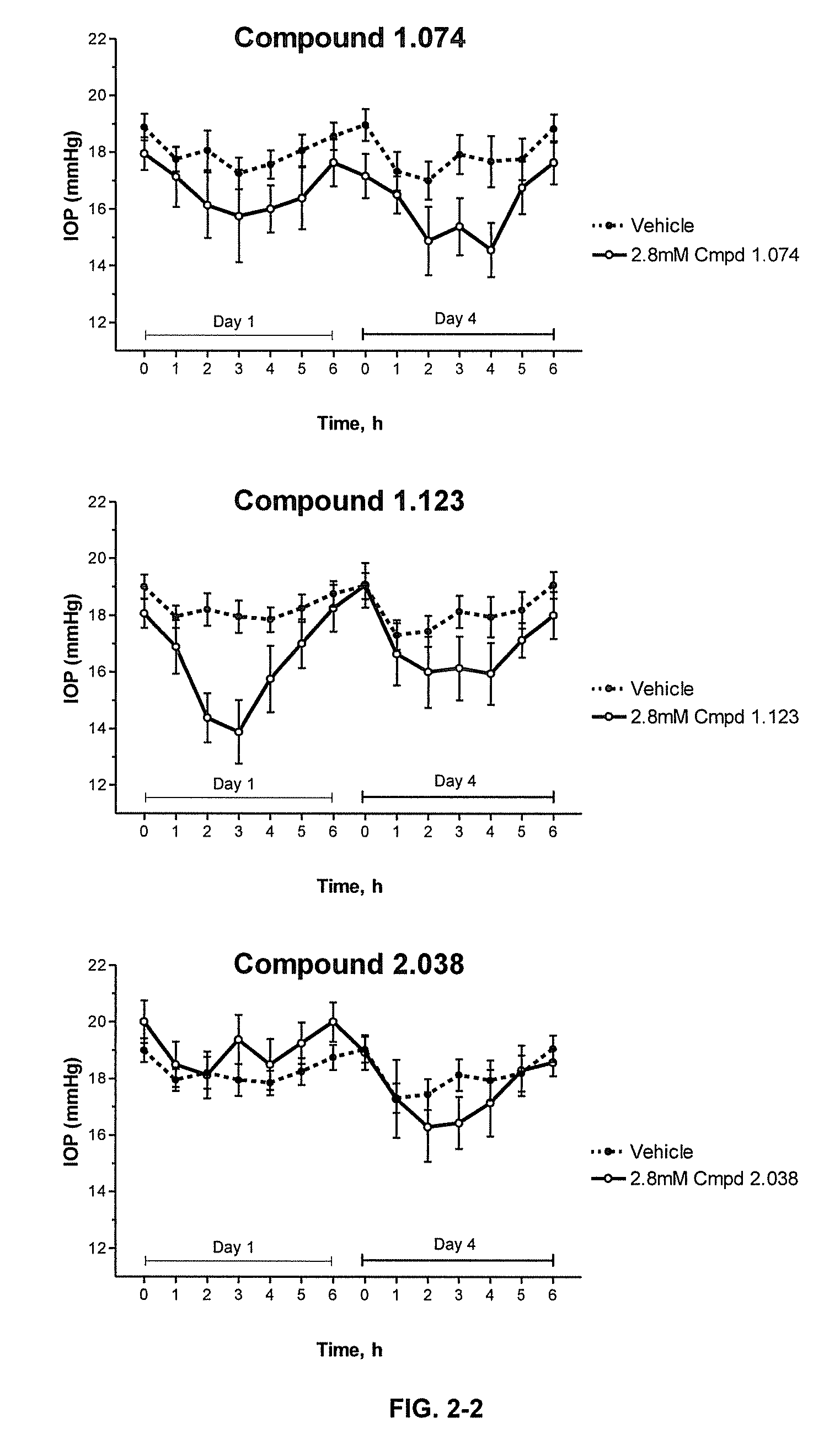Cytoskeletal active rho kinase inhibitor compounds, composition and use
a technology of cytoskeletal active compounds and rho kinase inhibitors, applied in the direction of heterocyclic compound active ingredients, drug compositions, biocide, etc., can solve the problems of no commercially approved therapeutic agents, high incidence of severe complications, and abnormal high, so as to reduce intraocular pressure, inhibit wound healing, and reduce the effect of intraocular pressur
- Summary
- Abstract
- Description
- Claims
- Application Information
AI Technical Summary
Benefits of technology
Problems solved by technology
Method used
Image
Examples
example 1
[0081]
2,2-Dimethyl-1-(5-nitro-1H-indazol-1-yl)propan-1-one
[0082]A 4 L 3-neck round bottom flask fitted with a nitrogen inlet and mechanical stirrer was charged with a solution of 5-nitroindazole (80.0 g, 0.49 mol) in tetrahydrofuran (1 L). The mixture was cooled to 0° C. and triethylamine (85.4 mL, 0.61 mol) was added. To the mixture was added pivaloyl chloride (63.4 mL, 0.52 mol) dropwise over a period of 15 minutes. The reaction was allowed to warm to 20° C. over a period of 2 hours. The reaction was filtered and concentrated to a dark red oil. To the oil was added methylene chloride (60 mL). The resulting slurry was stirred vigorously, giving a white precipitate that was isolated by filtration. The solid was dried in a vacuum oven at 40° C. overnight to afford the title compound (95 g, 79%).
example 2
[0083]
1-(5-Amino-1H-indazol-1-yl)-2,2-dimethylpropan-1-one Maleate
[0084]Into a 0.5 L stainless steel reaction vessel were added 2,2-dimethyl-1-(5-nitro-1H-indazol-1-yl)propan-1-one (25.0 g, 0.10 mol), ethanol (300 mL) and 10% palladium on charcoal (2.0 g, 1.9 mmol). The vessel was sealed, evacuated and refilled with nitrogen three times, and evacuated and refilled with hydrogen to 75 psi. As the hydrogen was consumed, the vessel was refilled until a pressure of 75 psi was maintained. The vessel was degassed and the reaction mixture was removed, filtered over celite, and concentrated to give the desired product as a yellow oil (˜22 g, 100% yield). The crude product was dissolved in ethanol (220 mL). A solution of maleic acid (11.8 g, 0.10 mol) in ethanol (60 mL) was added in one portion. The mixture was stirred vigorously. As a precipitate began to form, the mixture was cooled to 0° C. and stirred for thirty minutes. The precipitate was isolated by filtration and dried in a vacuum ov...
example 3
[0086]
tert-Butyl 3-(1-Pivaloyl-1H-indazol-5-ylamino)piperidine-1-carboxylate
[0087]Into a 1 L 3-neck round bottom flask fitted with a nitrogen inlet and mechanical stirrer was added tert-butyl 3-oxopiperidine-1-carboxylate (14.2 g, 0.07 mol), 1,2-dichloroethane (300 mL), and 1-(5-amino-1H-indazol-1-yl)-2,2-dimethylpropan-1-one maleate salt (23.0 g, 0.07 mol). The vessel was purged with nitrogen and stirred at 20° C. for one hour. Sodium triacetoxyborohydride (19.0 g, 0.09 mol) was added, and the reaction was monitored by analytical TLC to completion. The reaction was diluted with 100 mL of saturated sodium bicarbonate. The organic phase was isolated, dried over MgSO4, filtered and evaporated to dryness to afford the title compound as a yellow solid (25.0 g, 91%).
PUM
| Property | Measurement | Unit |
|---|---|---|
| intraocular pressure | aaaaa | aaaaa |
| intraocular pressure | aaaaa | aaaaa |
| intraocular pressure | aaaaa | aaaaa |
Abstract
Description
Claims
Application Information
 Login to View More
Login to View More - R&D
- Intellectual Property
- Life Sciences
- Materials
- Tech Scout
- Unparalleled Data Quality
- Higher Quality Content
- 60% Fewer Hallucinations
Browse by: Latest US Patents, China's latest patents, Technical Efficacy Thesaurus, Application Domain, Technology Topic, Popular Technical Reports.
© 2025 PatSnap. All rights reserved.Legal|Privacy policy|Modern Slavery Act Transparency Statement|Sitemap|About US| Contact US: help@patsnap.com



